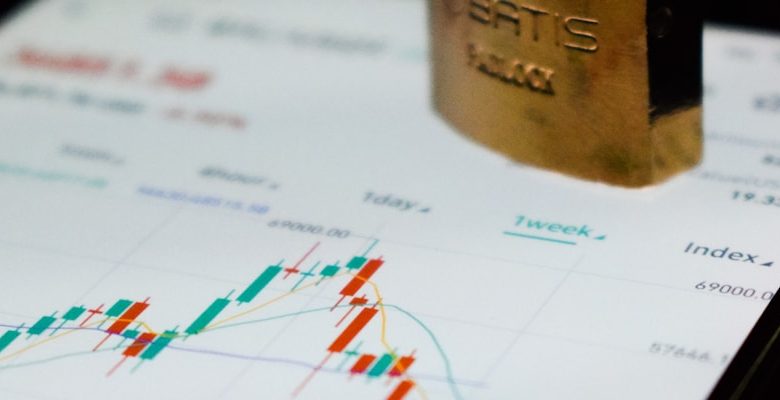The Mechanics of Uniswap: Decentralized Trading Explained

- Introduction to Uniswap and decentralized trading
- Understanding the automated market maker model
- Importance of liquidity pools in Uniswap
- Comparison of Uniswap with traditional exchanges
- Exploring the benefits of decentralized trading on Uniswap
- Challenges and limitations of using Uniswap for trading
Introduction to Uniswap and decentralized trading
Uniswap is a decentralized exchange platform that allows users to trade cryptocurrencies without the need for a central authority. This innovative approach to trading has gained popularity in the blockchain community for its transparency and security features. Decentralized trading on Uniswap is powered by smart contracts, which eliminate the need for intermediaries and reduce the risk of manipulation. By connecting buyers and sellers directly, Uniswap enables peer-to-peer trading in a trustless environment.
Understanding the automated market maker model
The automated market maker (AMM) model is a key component of decentralized exchanges like Uniswap. This model allows users to trade cryptocurrencies without the need for traditional order books or centralized intermediaries. Instead, trades are executed against liquidity pools, which are pools of tokens provided by users.
In an AMM system, the prices of tokens are determined algorithmically based on the ratio of tokens in the pool. When a trade is made, the pool’s ratio of tokens is adjusted to reflect the new trade, which in turn affects the price of the tokens. This system ensures that there is always liquidity available for trading, as users can trade against the pool at any time.
One of the main advantages of the AMM model is its ability to provide continuous liquidity for trading, even in low-volume markets. This is in contrast to traditional exchanges, where liquidity can be limited, especially for less popular tokens. Additionally, AMMs are non-custodial, meaning that users retain control of their funds throughout the trading process.
Overall, the AMM model has revolutionized the way decentralized exchanges operate, making trading more efficient and accessible to a wider range of users. By understanding how AMMs work, traders can take full advantage of the benefits they offer when using platforms like Uniswap.
Importance of liquidity pools in Uniswap
Understanding the importance of liquidity pools in Uniswap is crucial for anyone looking to participate in decentralized trading. Liquidity pools are essential components of Uniswap, as they enable users to trade tokens without the need for a centralized intermediary. By providing liquidity to these pools, users can earn fees on their deposited tokens.
One of the key benefits of liquidity pools in Uniswap is their ability to ensure that there is always liquidity available for trading. This helps to reduce slippage, which is the difference between the expected price of a trade and the actual price. Additionally, liquidity pools play a vital role in determining the price of tokens on Uniswap.
Without sufficient liquidity in a pool, the price of a token can be easily manipulated, leading to potential losses for traders. By contributing to liquidity pools, users help to stabilize token prices and create a more efficient trading environment. In this way, liquidity pools are essential for the overall functioning of Uniswap and other decentralized exchanges.
Comparison of Uniswap with traditional exchanges
When comparing Uniswap with traditional exchanges, there are several key differences to consider. One of the main distinctions is that Uniswap is a decentralized exchange (DEX), meaning it operates without a central authority overseeing trades. This stands in contrast to traditional exchanges, which are typically centralized and require users to trust the exchange to facilitate transactions.
Another difference is the liquidity provision mechanism. Uniswap relies on liquidity pools, where users contribute funds to enable trading pairs. This allows for anyone to become a liquidity provider and earn fees on trades. On the other hand, traditional exchanges rely on order books to match buyers and sellers, which can sometimes lead to issues with liquidity and price slippage.
Furthermore, Uniswap operates on a decentralized automated market maker (AMM) model, which uses algorithms to set prices based on the ratio of assets in the liquidity pool. This can result in more efficient price discovery compared to traditional exchanges, where prices are determined by the order book and can be subject to manipulation.
Overall, while traditional exchanges offer a familiar trading experience with features like limit orders and leverage, Uniswap provides a more decentralized, transparent, and efficient way to trade assets. Both have their own advantages and drawbacks, but Uniswap’s innovative approach to decentralized trading is gaining popularity within the cryptocurrency community.
Exploring the benefits of decentralized trading on Uniswap
Decentralized trading on Uniswap offers a variety of benefits for users looking to engage in cryptocurrency exchanges. One of the key advantages is the elimination of intermediaries, allowing for direct peer-to-peer transactions. This not only increases security but also reduces costs associated with traditional trading platforms. Additionally, Uniswap operates on a decentralized network, meaning there is no central point of control or failure, enhancing reliability for users.
Another benefit of decentralized trading on Uniswap is the ability to trade a wide range of tokens. With a vast selection of cryptocurrencies available for trading, users have the opportunity to diversify their portfolios and take advantage of emerging opportunities in the market. This flexibility and accessibility make Uniswap an attractive option for both experienced traders and newcomers to the world of cryptocurrency.
Moreover, decentralized trading on Uniswap is characterized by its transparency and openness. All transactions are recorded on the blockchain, providing a public ledger of activity that can be verified by anyone. This level of transparency not only builds trust among users but also helps to prevent fraudulent activities. By operating on a decentralized platform, Uniswap ensures that all participants have equal access to information and resources, promoting a fair and inclusive trading environment.
Challenges and limitations of using Uniswap for trading
There are several challenges and limitations to consider when using Uniswap for trading. One of the main issues is the lack of liquidity for less popular tokens, which can result in slippage and higher transaction costs. Additionally, Uniswap’s automated market-making system may not always provide the best prices compared to centralized exchanges with professional market makers.
Another limitation is the potential for frontrunning, where traders exploit delays in transaction processing to gain an advantage. This can lead to unfair trading practices and reduced profitability for regular users. Furthermore, Uniswap’s reliance on smart contracts makes it susceptible to vulnerabilities and hacking risks, which can result in the loss of funds for traders.
Moreover, the user experience on Uniswap may not be as seamless as on centralized exchanges, as it requires interacting with Ethereum wallets and understanding how to use decentralized applications. This can be intimidating for newcomers to the cryptocurrency space and may deter them from using the platform.



